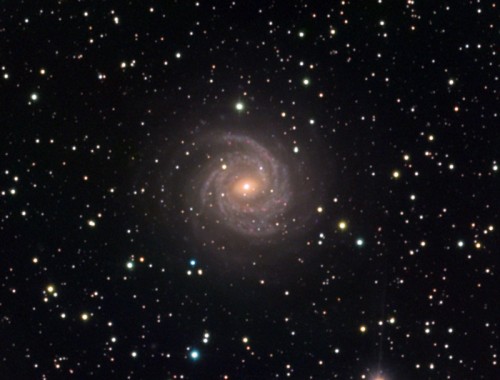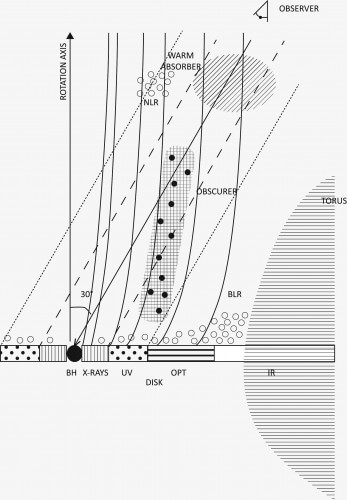Technion researchers in an international team that discovered a thick stream of gas moving rapidly outwards and blocking 90% of the X-rays emitted by the supermassive black hole at the center of the galaxy

An international team of astronomers, including Professor Ehud Bacher, head of the Asher Space Research Institute and Dr. Shai Caspi from the Technion's Faculty of Physics, discovered that the supermassive black hole at the heart of galaxy NGC 5548 has recently undergone a strange and unexpected change, which occurs only very rarely in the heart of An active galaxy. The researchers detected a thick stream of gas moving rapidly outward blocking 90% of the X-rays emitted by the supermassive black hole at the center of the galaxy.
This activity may reveal new things about the interaction between supermassive black holes and their host galaxies. The results were published in the prestigious scientific journal Science.
The discovery is the result of an extensive set of observations that included the main telescopes of NASA and ESA: XMM-Newton, the Hubble Space Telescope, Swift, NuSTAR, Chandra and Integral. An international group led by Jelle Kastra from the Netherlands Space Research Institute (SRON) managed the most extensive monitoring project on an active galaxy in 2013-2004.
"We have made a careful observation of streams from active galaxies for about a decade, but so far we have not been able to crack the mechanism of their operation. Now, in the current observations, we located for the first time the origin of this "wind" and were able to measure its high speed," said Professor Bacher, a world expert in X-ray spectroscopy of winds from active galaxies.
The researchers explain that the detection of the massive wind is the first direct witness to the masking process (predicted a long time ago) that is required to accelerate strong gas streams, or "winds", to high speeds. The group reports that this is a breakthrough in understanding the interactions between supermassive black holes and the galaxies that host them.
Matter falling into a black hole heats up and emits X-rays and ultraviolet radiation, before being swallowed into the hole. This radiation may cause winds that blow outward. The winds can be so strong that they sweep away gas that would otherwise fall into the black hole. These winds regulate the fall of matter into the hole, and may therefore affect both the growth of the black hole and the growth of the galaxy. If it is the falling matter that feeds the black hole, the newly discovered wind is evidence of its eating disorders.

But the winds only form if their point of origin is shielded from X-rays. The gas stream now discovered in the Seyfert galaxy NGC 5548—a type of galaxy that has been widely studied for the past fifty years—provides such protection, which has been in place for at least three years.
Immediately after the Hubble Space Telescope observed NGC 5548 on June 22, 2013, the team noticed dramatic changes that had occurred since Hubble's previous observation in 2011. The team members detected signatures of much colder gas than previously observed, indicating that the wind cooled as a result of a dramatic decrease in ionizing X-rays originating from the galaxy's core.
Combining and analyzing information from six observations allowed the team to put together the pieces of the puzzle. Supermassive black holes in the cores of active galaxies such as NGC 5548 "dislodge" enormous amounts of material through powerful winds of ionized gas. For example, the persistent wind of NGC 5548, which has been known for twenty years, reaches speeds in excess of 1,000 kilometers per second.
But now a new wind emerged, stronger and much faster. "The new wind reaches a speed of 5,000 kilometers per second," says Kastra. "The new gas stream blocks 90% of the X-rays (at low energies) that come from the vicinity of the black hole, and covers about a third of the area that emits the ultraviolet radiation a few light-days away from the black hole."
Video: A new creation by Reno Persson, one of the leaders in video game development (Assassin's Creed by Ubisoft). The film takes us on a journey into the inner regions of NGC 5548 and helps us visualize the findings presented in the study in question.

5 תגובות
A giant black hole has been discovered
A giant black hole has been discovered
http://m.space.com/28664-monster-black-hole-largest-brightest-ever.html
Point, if I didn't know your comments I would think you were trying to spark a casual discussion on the part of the "spiritual people" on the subject... 🙂
letter reversal hole of wind